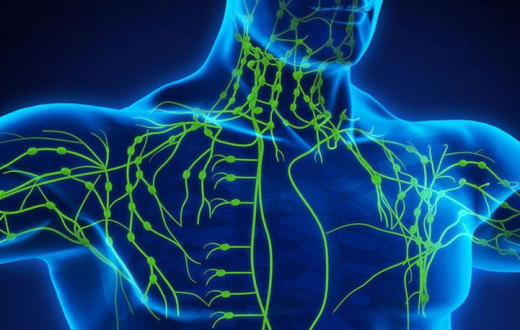By Sejal Shah | Posted: October 25, 2019

Kapha comes from the root word ‘slish’, which means to bind, or hold together. It consists of the elements of earth and water, and provides the glue to hold the cells of the body together. According to Ayurveda, Kapha is responsible for the stability, lubrication, structure, substance, and support of our physical body.
‘Ashtanga Hrdayam: Sutrasthana’, an ancient text on Ayurveda, describes Kapha as “snigdhah śīto gururmandah ślakṣṇo mṛtsnah sthirah kaphah ||” which means that Kapha is oily, cool, heavy, slow, smooth, slimy, and stable.
Both physical and psychological stability, as well as strength and endurance, are governed by Kapha dosha. At the physical level, Kapha governs the structural integrity of the body (cohesiveness to maintain a specific form/shape), immunity against diseases, and the maintenance of body fluids. At the mental level, Kapha boosts emotions like love, compassion, forgiveness, patience, loyalty, empathy, and calmness.
What does a Kapha personality look like?
People with a Kapha constitution are generally cool, calm, lazy, cheerful, and stocky (if not overweight). If assigned a task, they may not complete the task in time. Actually, Ayurveda says that because a Kapha person is the least bothered, happiest type of person on the whole planet, the best constitution is Kapha. They’re cheerful all the time! Other qualities include a thick build, thick, dark hair, big eyes with clear whites, and prominent, shiny, white teeth. The skin may also be thick, moist, and a little cool to the touch. As a personality type, while they tend to accumulate stuff, they also have a sharing streak that moves them to service for society.
When Kapha is in balance
When Kapha within us is in balance, we feel a sense of support in all bodily functions. The dense, stable, conserving qualities of Kapha provides stability and firmness to our joints, which are well-lubricated and support the bones, and there is internal support for mucous membranes and the GI lining, as well as the myelin sheath for proper brain function.
Contentment is one of the benefits that a balanced Kapha brings to our lives, and its ability to love and forgive nurtures our relationships with empathy, compassion, and patience.
Signs and Symptoms of Kapha Imbalance:
Physical
Excess mucus
Slow/sluggish bowel movements
Increase in body weight
Thick white coating of the tongue
Sinus congestion
Lowered metabolism
Loss of strength
Fatty accumulation in the arteries
Mucoid diarrhea
Pre-diabetes
Cold/cough/runny nose
Hay fever
Cold sweats
Excess urination
Excess ear wax
Oily skin and hair
Poor sense of taste and smell
Behavioral
Lethargy/ drowsiness
Difficulty rising in the morning/oversleeping
Possessiveness
Stubbornness
Emotional overeating
Greed
Melancholy
Ignorance
Delusion
Too little Kapha dosha can result in a dry respiratory tract and a burning sensation in the stomach.
Effects of Kapha Imbalance:
Physical
Varicose veins with thrombus
Severely high cholesterol
Loss of consciousness (as in diabetic coma)
Diabetes
Anorexia nervosa
Profuse edema
Extreme hypotonia
Glaucoma
Gallstones
Blood in the stools
Hyperglycemia
Cystic fibrosis of lungs/ovaries
Chronic sinus infections
Congestive heart failure
Leukemia
Hypertension
Liposarcomas
Hypertrophy
Enlarged spleen and/or liver
Allergies
Behavioral
Depression
Melancholy
Brain fog
What causes Kapha Imbalance?
Consuming Kapha aggravating foods such as dairy, fatty and oily food, cold drinks, frozen and salty food, sweets, very sweet and sour fruits
Overeating, eating heavy meals
Spending too much time in cold and damp climates
Lack of physical activity/ sleeping during the day
Balancing Kapha dosha:
Dietary recommendations:
In general, a Kapha diet should be lively, colorful, and full of energy to help spark the digestive and metabolic systems. Eat your largest meal at lunchtime and a smaller meal at dinnertime. Allow at least three hours for digestion before bedtime.
Because Kapha is heavy, oily, and cold, favor foods that are light, dry, or warm and bitter, and astringent and pungent in taste. Include Kapha pacifying food items that can rejuvenate the mind, like leafy greens, vegetables, beans, astringent and lighter fruits like apples, apricots, peaches, pears, and mangoes. Reduce heavier fruits like bananas, avocados, pineapples, oranges, peaches, coconuts, melons, dates, and figs. Limit your overall consumption.
For grains, favor barley, corn, millet, buckwheat, and rye. Reduce intake of oats, rice, and wheat.
All spices except salt are pacifying to Kapha. Use pungent spices like pepper, cayenne, mustard seed, and ginger freely in your diet.
Avoid most sweeteners except for raw honey. Take a tablespoon or two (but no more) of raw honey every day can help release excess Kapha. Do not cook with honey or do not boil it.
Drink hot ginger tea with meals to help stimulate slow digestion and dull taste buds. Drink 2 to 3 cups of ginger tea daily.
Reduce intake of all nuts and seeds except pumpkin and sunflower seeds.
Reduce the intake of dairy, which tends to increase Kapha. Small amounts of ghee, low-fat milk, and low-fat yogurt can be taken if necessary.
Use small amounts of fats and oils like extra virgin olive oil, ghee, almond oil, corn oil, sunflower oil, mustard oil, or safflower oil.
Limit consumption of red meat.
General lifestyle recommendations:
Early to bed, early to rise
Regular physical activity, and a vigorous exercise routine (jogging, cycling, and other adventures)
Involve oneself in introspective activities (writing, emotional housekeeping, meditation etc)
Keep oneself warm and dry
Oil massage (abhyanga) with light or stimulating oils like mustard or olive or even dry massage if it suits you (gharshana) regularly
Experiencing lively music, cheerful company
Yoga recommendations:
Dynamic movements—pulsing in and out of poses—are a great way to create warmth in the body as well as circulation. Squats, knee bends, and twists are very useful.
Sun salutations (Surya namaskara)
Standing backward bend (Ardha chakrasana)
Revolved chair posture (Parivrtta utkatasana)
Warrior posture II (Veerabhadrasana II)
Triangle pose (Trikonasana)
Tree pose (Vrukshasana)
Bow posture (Dhanurasana)
Headstand (Shirshasana)
Upward plank pose (Purvottanasana)
Corpse pose (Shavasana)
Shining skull breathing (Kapalbhati)
Herbal recommendations:
Triphala
Vyaghryadi (decongestant)
Kanchanara guggulu
Lavangadi vati
Nishamlaki
Amrut
For the best results, consult an Ayurvedic practitioner before you start taking any herbs. Depending upon your prescription, you may order the best quality and authentic herbs from Sri Sri Tattva.
Kapha, as the cool, calm nature, can sometimes be overwhelming for someone that needs to be more motivated, active, and engaged. Use the above tips to balance if you think your Kapha is out of balance. If you have a romantic partner, balancing your Kapha is a great excuse to cuddle with them.
Late winter-Spring is the season when Kapha dosha tends to get imbalanced. Learn here, how to balance your Kapha in these months from Mid-Feb to the end of May.
Written with inputs from Anuradha Gupta, our in house Ayurveda expert. The previous version of this blog post appeared on the Art of Living, India.
Sejal Shah, E-YRT 500 Sri Sri Yoga Teacher, YACEP, Meditation Teacher, Happiness expert, NYU Post Graduate Medical School approved Yoga-CME retreat facilitator, Mind-Body Wellness Writer, Homeopath. She can be followed on Instagram, Twitter, and Facebook.





























